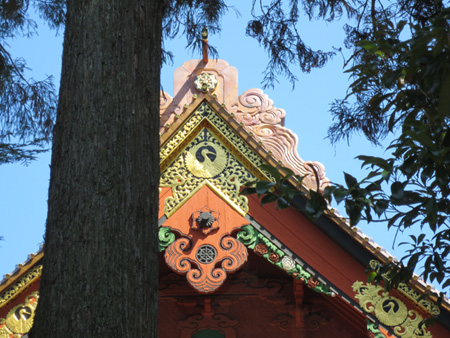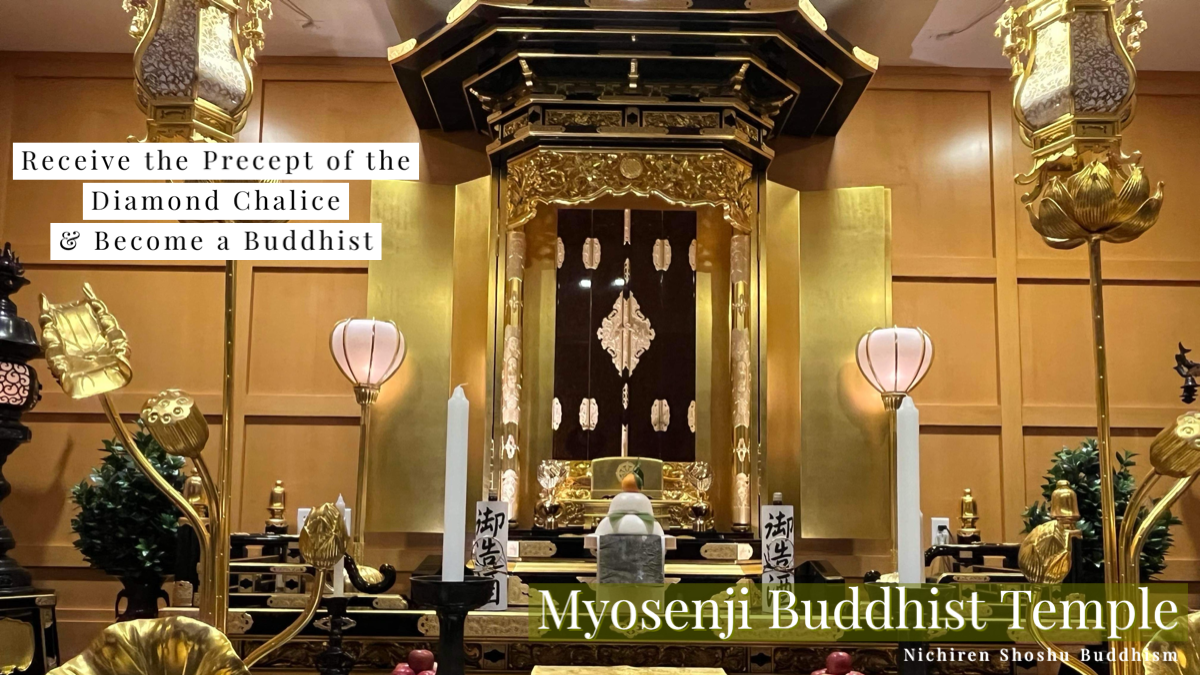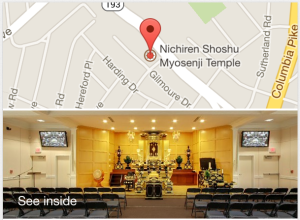On Sunday, August 11th, there will be a New Members Meeting with our Chief Priest, Rev. Murata. We will continue to to learn from the basics of practice. Here are some of facts about Nichiren Shoshu Buddhism you may not know or you may want to ask about …

The Crane – Official Emblem of Nichiren Shoshu Buddhism
Guests and new members often ask about the crane symbol. The round crane mark is the official emblem of Nichiren Shoshu. This symbol is on our Liturgy of Nichiren Shoshu book, Nichiren Shoshu butsugu (altar accessories), and in Nichiren Shoshu temples around the world. It is a sacred symbol to Nichiren Shoshu tradition. It should not be used by lay members for personal use.
The Symbolism of Joining the Hands in Prayer
Nichiren Shoshu describes the meaning of joining our hands in prayer in the following way: Our whole-hearted faith is represented by the eight petals of the lotus flower. This is also called the “lotus of the heart” or the “white lotus” and it depicts our Buddha nature. In joining our hands in prayer, the eight petals are represented by our eight fingers, and the remaining two thumbs symbolize the father and the mother or the principles of “reality and wisdom” and “practicing for spiritual stability and wisdom.” It has been said that the ten digits portray the concept of three-thousand realms inherent in the ten worlds, and joining the fingers and palms signifies the mutual possession of the ten worlds. Bringing the joined hands in front of the chest represents the white lotus of our hearts (our faith). (excerpted from Basics of Practice book, p.52)
Reading the Gosho
Study means learning the doctrines of Nichiren Shoshu. Teachings of other sects do not have the transmission of the True Law and do not convey the Daishonin’s true intention. The basis for the study of Nichiren Shoshu is Nichiren Daishonin’s Gosho.
The Gosho, the writings of the Daishonin, reveal the truth of the Daishonin’s Buddhism, the superiority and inferiority or the shallowness and depth of all religions, and the correct attitude in faith. By using the Gosho as the source, we are able to directly study the teachings of the Daishonin.
While reading the Gosho, it is important to remember that profound meanings are hidden in them. There are great distinctions between the contents of the Daishonin’s teaching before and after the Sado Exile. In His teachings before Sado, for example, there is not the slightest mention of the Three Great Secret Laws. Learning important background information such as this will further help us in our study of True Buddhism. (excerpted from Basics of Practice, p. 55)


